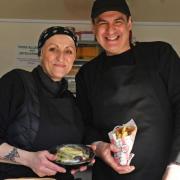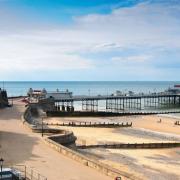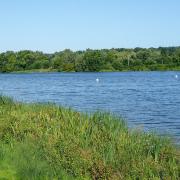Secretive, surprising and now the inspiration for a new East Anglian play, the Norfolk oyster is worth the chase, says Eve Stebbing, founder and artistic director of Spin-Off Theatre.

When I heard Ivan Cutting, artistic director of Eastern Angles, was planning to tour a new play with the East Anglian oyster industry at its centre, I realised how little I knew about the ancient art of oyster farming here in the region, and that I had never seen any growing out in the wilds.
Oysters have always been synonymous with secrecy. “He’s as close as an oyster”, we say, meaning he gives nothing away. Perhaps there has not been a time when the Norfolk oyster gave up its secrets less lightly. It turns out that even finding working beds is a challenge to the uninitiated. You might have thought Thornham would be a good bet: Think again – “Oh yes, they used to farm oysters here, but not any more,” says the barmaid at the Lifeboat Inn.
My search ends happily, however, when I discover that the local industry now centres on Brancaster, where two families, the Southerlands and the Looses, have harvested shellfish for generations. But alas a bitter northwesterly sees to it that even here, the oysters themselves keep out of sight.
“My grandfather had a dredger and used to fish the seas for oysters, but these days that’s all on trestles and that’s a muddy old walk,” says Cyril Southerland, peering out of his back window at the brisk sea and stone-grey sky. “The native oyster hasn’t been fished here since the turn of the last century, when a parasite came – we don’t pull them off the sea bed now.”
Between 1800 and 1900, Brancaster harbour was alive with the sight of dredgers, bobbing impatiently on their moorings and blazoned with industrious names like The Ant and The Bee. The nectar they sought lay out on the treacherous Burnham Flats where ancient holes held the best quality oyster harvest. These tasty molluscs were known as the Burnham Grounders. A dozen first class oysters could fetch three shillings and sixpence, and Lord Leicester at Holkham Hall is known to have put in a regular order. For many, this was the great era of oyster fishing, when stocks were plentiful and the living was good.
Speaking to Ivan Cutting of Eastern Angles, freshly informed by Southerland, I discover that his play mines the nostalgia for these bustling old days and is inspired by the real life repair of a Harwich based dredger called Priscilla. “One of the themes of the show is restoration. How much of the original boat do you need before it’s just a replica, and why restore it at all?” Ivan asks. He seems less struck by the secret qualities of the oyster, however, and is keener to highlight both its aphrodisiac powers and the conflict he feels about the importance of heritage and digging up the past. Isn’t it better just to get on with things?
Cyril Southerland agrees, he’s not sure about the value of restoring the old boats, although he does think that digging up the oyster smack sunk in the ooze of Brancaster harbour might be a worthwhile activity . . . “for the gold sovereign that is meant to lie buried beneath its mast!”
Fellow Brancaster oyster farmer Richard Loose is similarly lacking in nostalgia. “We don’t know much about the dredgers now . . . and the new beds can give a good harvest.” He is the more prolific of the two farmers, producing about 350,000 best quality bivalves a year. The beds work on a rotation system, with Loose constantly shifting the crop so that it grows to its best advantage. His work must be a delicate operation at times, with some creatures as tiny as a fingernail. It’s rather nice to hear that he predominantly markets his shellfish here in Norfolk.
Brancaster oysters are regular fare at Gurney’s fish shop in Burnham Market, where I finally get to taste one. “People find them exciting,” enthuses fishmonger Ned Catt. “They’re like the Japanese Blowfish because they’re still alive until you cut them off the muscle. No fish comes fresher than that.” He hands me an opened shell . . .
Slippery as ever, the oyster has vanished from my mouth almost before it’s hit my palette. I’m left wondering how to pin down the taste of it. Sweet? Tender? The savour of the fresh north Norfolk sea? Elusive as ever, it defies description, keeping its secret and leaving me hungry for more.
Oyster catcher
Eastern Angles touring theatre company, which is based at the Sir John Mills Theatre in Ipswich, is bringing Ivan Cutting’s new play Oyster to Norfolk venues this spring. The play is a story of sex, boat building and bivalve molluscs, and combines historical face and contemporary fiction to capture the soul of this ancient industry.
April 1, St George’s Theatre, Great Yarmouth
April 11, Cley Village Hall
April 28, Town Hall, Downham Market
May 13, New Buckenham Village Hall
May 20, Aylsham Town Hall
May 22, Sheringham Little Theatre
May 30, Hindolveston Village Hall
June 3, The Garage, Norwich
Plus many more venues around Suffolk and Cambridgeshire.
For more information and where to book tickets, 01473 211498; www.easternangles.co.uk



























